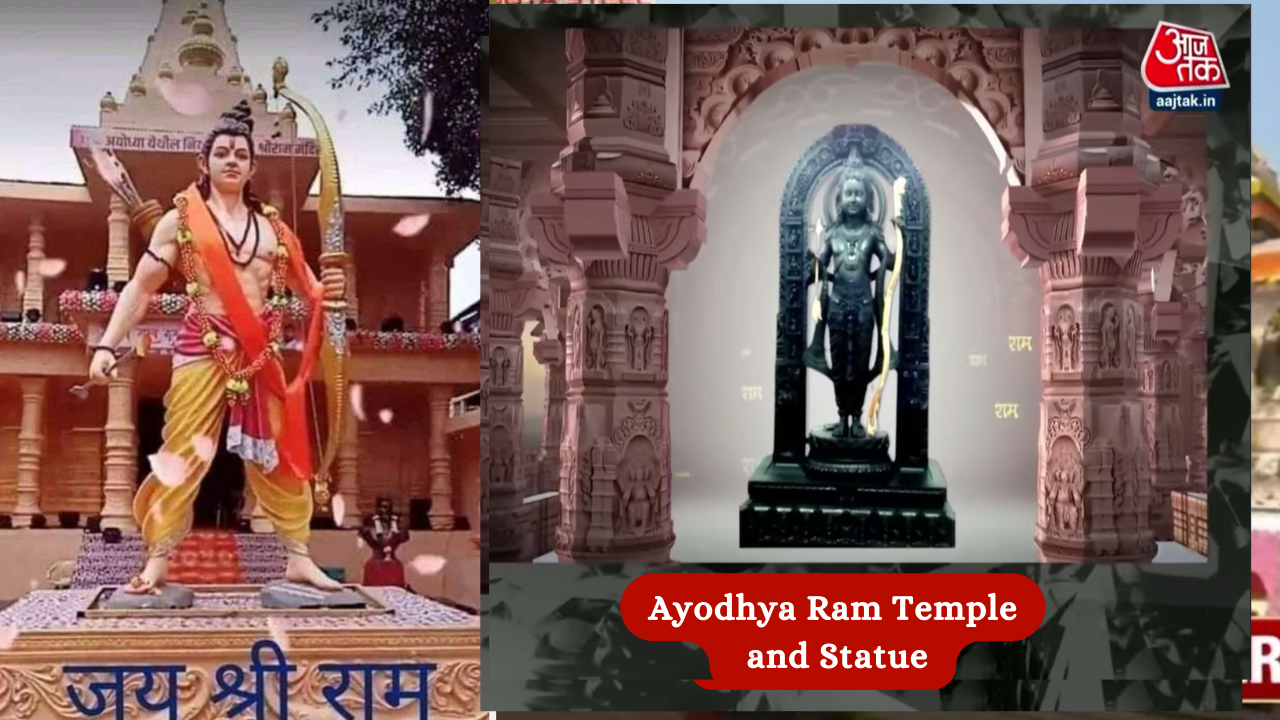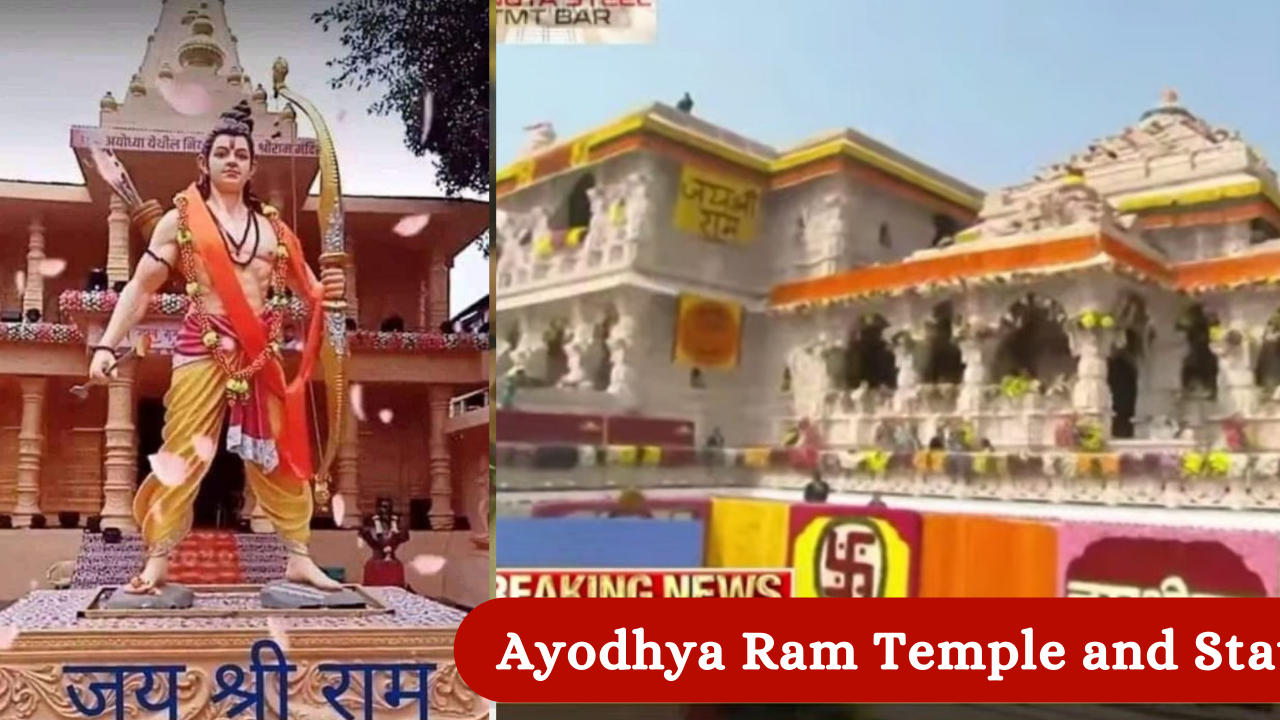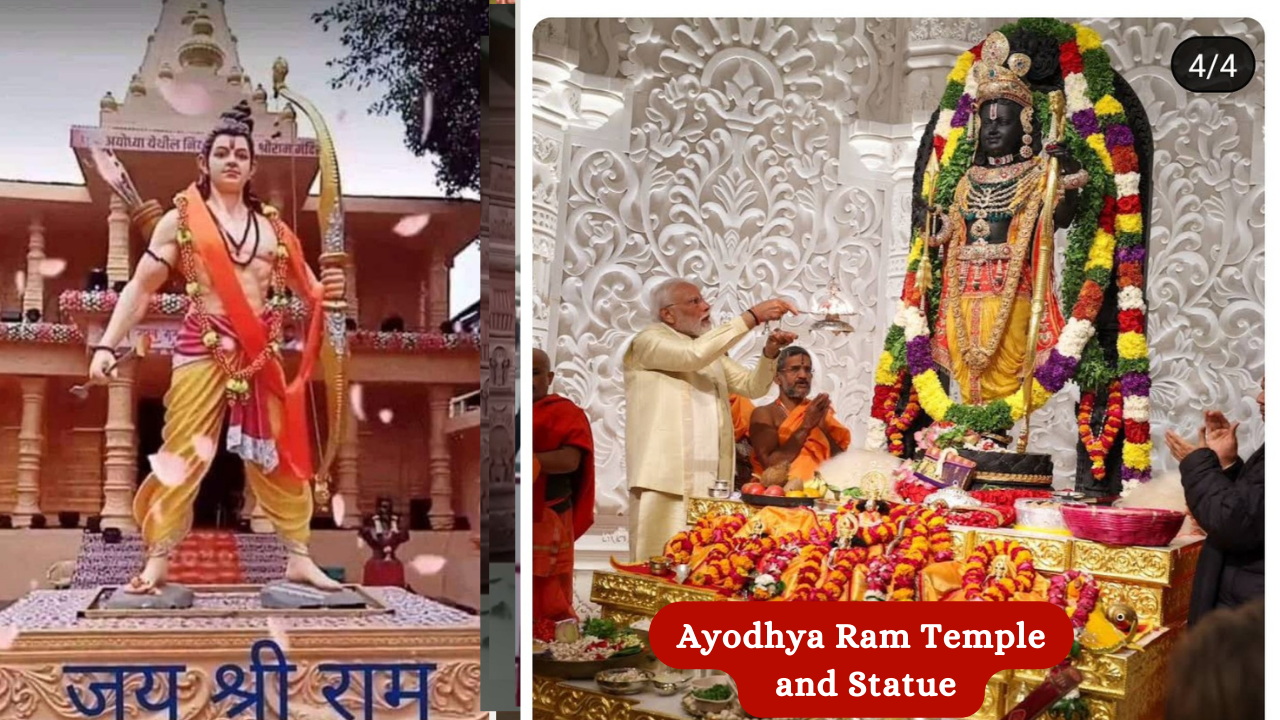Shyam Varna Splendor: Decoding the Symbolism Behind Lord Rama’s Idol ( श्याम वर्ण वैभव: भगवान राम की मूर्ति के पीछे के प्रतीकवाद को समझना )

Introduction:
In the heart of India’s iconic city of Ayodhya, is a grand temple dedicated to Lord Rama’s Idol. Let us embark on a spiritual journey as we explore the significance of the idol installed in the sanctum sanctorum and learn about the rich history and cultural heritage associated with the Ram Temple.
Unveiling the Divine Image: Lord Rama’s Idol
Within the walls of the Ayodhya temple, we first encounter the divine idol of Lord Rama’s Idol. This idol representing young Ram Lalla is made from a sacred stone from Karnataka and is believed to be more than 200,000 years old. This idol, decorated in a charming shade of Shyam (dark) colour, mesmerises the devotees with its depiction of Lord Rama. During its first five years.
Symbolism and Beauty:
The idol not only depicts the youthful charm of Lord Rama but also his divine qualities as described in the epic Ramayana. Her eyes are reminiscent of lotus petals, lips like the splendour of a blossoming flower, throat like a fruit, and face as radiant as the full moon. Every detail is a testament to the artistic genius inspired by the sacred texts।

Eternal Beauty and Cultural Inspiration:
Inspired by the Ramayana, this idol is a timeless representation of the divine beauty of Lord Rama’s Idol. The selection of Shyam Varna (dark colour) symbolises the essence of the colour of the word Varna. It is a sign of the vibrant colours of life, echoing the cultural significance of Lord Ram’s presence in Ayodhya.
The Ageless Idol: Lord Rama’s Idol
This precisely carved idol is said to have endured for centuries and stands as a testament to the enduring legacy of Lord Rama’s Idol. Its ebony colour adds to its allure, earning it the title of ‘Shyam Varna’, which resonates with the essence of colour and spirituality.

A journey through time:
This divine representation is not just a sculpture but a living symbol, a timeless embodiment of the eternal presence of Lord Rama’s Idol. sanctum sanctorum of the Ram Temple, resonating with the sacred verses of the Ramayana, invites devotees to witness the divine aura and feel a connection to a bygone era.
Controversies and current scenario:
In recent times, Lord Rama’s Idol Temple has been the focal point of political debates and controversies. The journey of more than 500 years of construction of the temple has seen many ups and downs. Today, when the idol of Ramallah is revered, the temple has become a symbol of unity and spiritual rejuvenation for millions of people.
Political Maneuvering and Public Sentiment:
Unfortunately, amidst the spiritual revival, there are also examples of political manipulation. Some leaders, despite overwhelming support for the temple, have engaged in divisive politics. From questioning the need for the new statute to raising baseless objections, the constant change in narrative reflects a narrow-mindedness that seeks to exploit religious sentiments for political gains.
Public Outcry and Unity:
It is disappointing to see that some politicians are using the construction of the temple for their political agenda. However, the large public is united in their devotion to Lord Rama’s Idol and the temple. The vibrant celebrations, harmonious chanting and overwhelming support from different communities reflect the true spirit of unity that the Ram Temple symbolises.

conclusion:
The Ram temple in Ayodhya stands as a symbol of spiritual wisdom and cultural heritage. As devotees and pilgrims come to see the divine idol of Lord Rama’s Idols Idol, it is essential to embrace the unity and spirituality that it represents, keeping aside divisive political agendas.
Ram Mandir Ayodhya, Statue of Lord Rama, History of Ayodhya Temple, Importance of the black colour, Ramayana’s inspiration in sculpture, The cultural heritage of Ram Temple, Political controversy Ram Mandir, Unity in the construction of the Ram temple, Ayodhya temple public sentiment, Devotion to Lord Rama,